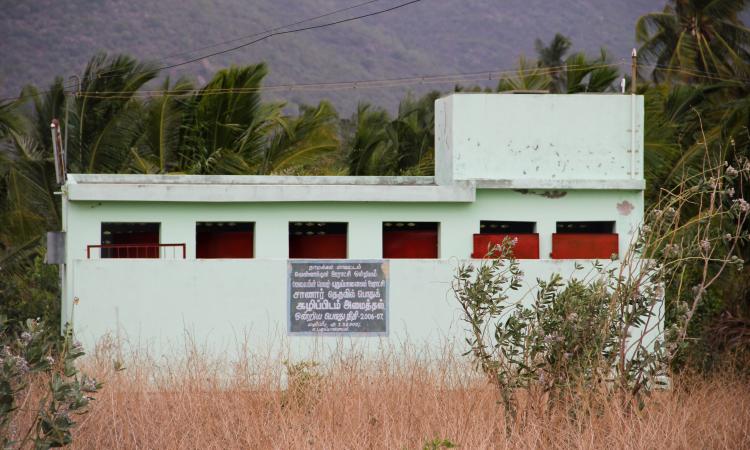
The prevalence of open defecation in low- and middle-income countries (LMICs), including India, is one of the main barriers to achieving Sustainable Development Goal 6 (SDG-6) by 2030. In South and Central Asia, India is found to practise open defecation at a high rate (16%) compared to both the regional average (12%) and the global average (6%).
India has implemented several programs to provide proper sanitation for all citizens and has made significant strides in eliminating open defecation. For instance, the proportion of Indians practising open defecation decreased approximately five times between 2000 (74%) and 2020 (16%). Nevertheless, the practise is widespread in rural areas, socioeconomically backward states, and among underprivileged groups (like the poor, illiterates, and lower castes).
Though the country is getting closer to being free of open defecation, the pace of progress varies spatially. Therefore, the current study ‘Spatial clustering and drivers of open defecation practice in India: Findings from the fifth round of National Family Health Survey (2019-21)’ is relevant to explore determinants of practicing open defecation at the small area level in India.
It aims to address this gap by exploring the spatial heterogeneity and predictors of open defecation in India using the most recent dataset, the fifth round of the National Family Health Survey (NFHS-5).
Through comprehensive analysis and understanding of the spatial patterns of open defecation, the present study aims to provide valuable insights into the underlying factors that drive the concentration of this phenomenon in specific areas.
Results
The hotspots of open defecation practise included 165 districts in India and clustered in Bihar, Jharkhand, Chhattisgarh, Uttar Pradesh, Madhya Pradesh, Odisha, Maharashtra, and Tamil Nadu.

Discussion
The results of the multivariable analysis in this study indicate a strong correlation between open defecation practises and various demographic, socio-economic, and geographic characteristics. In this study, open defecation practise dwindled as the household head's age increased.
In this study, the open defecation practise lessened with higher educational attainment. The study found significant disparities in access to toilet facilities between urban and rural areas, with one out of every three rural households practising open defecation. The study results suggest that rural residents are more inclined towards open defecation due to a combination of habits, traditional behaviour, a lack of awareness, and access to resources.
More recently, there has been a shift in latrine usage in rural areas as a result of increased awareness and availability of latrines, as well as changing societal attitudes towards sanitation and hygiene. The study highlights the importance of considering cultural and behavioural factors in the development and implementation of effective sanitation initiatives.
A significant association between open defecation practises and socio-religious identity was also observed in the present study, with a higher prevalence of open defecation among Hindu households and particularly those belonging to the ST and SC categories. Cultural factors often cause people to reject latrines within the premises of the house, viewing them as ritually impure and polluting.
The study also showed that households in the bottom wealth quintile were more likely to engage in open defecation than those in the upper wealth quintile, highlighting the existence of a significant rich-poor gap in improved sanitation practises. This could be due to the combined effects of economic and socio-cultural deprivation.
Furthermore, poor households with a kutcha house were more likely to practise open defecation. The dwellers of the kutcha house are typically more eager to construct the pucca bedroom first, followed by the other facilities that are required (like an improved latrine and kitchen). To address the coexistence of kutcha houses and open defecation, it is necessary to integrate latrine facilities along with durable apartments under the Pradhan Mantri Awas Yojana (PMAY).
The unavailability of water within the premises of the house is often a challenge to toilet acceptance in India.
The reimbursement approach of the GoI initiated Swachh Bharat Mission, which requires households to install toilets with their own investment and then claim subsidies, does not meet the needs of impoverished households since a substantial proportion of households reported a lack of initial funding for construction.
Another obstacle is defunct and unusable toilets due to poor construction and a lack of water storage. The government subsidised latrines largely remain unused and rejected. Even villages that had achieved official Open Defecation Free (ODF) certification had open defecation issues.
Conclusion
Open defecation remains a public health challenge in India, particularly in the north and central parts, among rural populations, and in socioeconomically deprived areas. It is crucial to focus on small area-level program implementation and assessment approaches to eliminate open defecation in India by 2030.
The study found that economic and cultural poverty, such as poorest wealth quintiles, illiteracy, religion and caste, were found to be significantly and spatially auto-correlated with open defecation practise. The study also found that household poverty, such as living in a kutcha house and lacking access to water within the premises, are also significant drivers contributing to the practise.
The study emphasised the need for further qualitative investigations to understand the socio-cultural beliefs, norms, and practises, and economic aspects, in order to develop effective and acceptable policies and programs to address the open defecation problem. The findings highlight the complexity of the issue and the need to address multiple spatially auto-correlated drivers to effectively tackle this public health challenge in India.
The full report can be accessed here
/articles/spatial-pattern-and-clustering-open-defecation-india